| ________________
CM . . .
. Volume XIV Number 12 . . . .February 8, 2008 
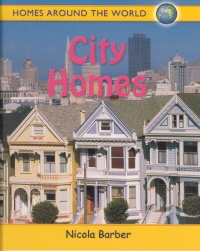 |
City Homes. (Homes Around the World).
Nicola Barber.
St. Catharines, ON: Crabtree, 2008.
32 pp., pbk. & hc., $10.95 (pbk.), $20.76 (rlb.).
ISBN 978-0-7787-3554-0 (pbk.), ISBN 978-0-7787-3542-7 (rlb.).
Subject Headings:
Dwellings-Juvenile literature.
City dwellers-Dwellings-Juvenile literature.
Grades 1-3 / Ages 6-8.
Review by Gail Hamilton.
**½ /4
|
| |
|
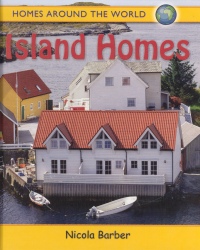 |
Island Homes. (Homes Around the World).
Nicola Barber.
St. Catharines, ON: Crabtree, 2008.
32 pp., pbk. & hc., $10.95 (pbk.), $20.76 (rlb.).
ISBN 978-0-7787-3555-7 (pbk.), ISBN 978-0-7787-3543-4 (rlb.).
Subject Headings:
Dwellings-Juvenile literature.
Island people-Dwellings-Juvenile literature.
Grades 1-3 / Ages 6-8.
Review by Gail Hamilton.
**½ /4
|
| |
|
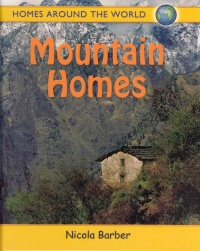 |
Mountain Homes. (Homes Around the World).
Nicola Barber.
St. Catharines, ON: Crabtree, 2008.
32 pp., pbk. & hc., $10.95 (pbk.), $20.76 (rlb.).
ISBN 978-0-7787-3557-1 (pbk.), ISBN 978-0-7787-3545-8 (rlb.).
Subject Headings:
Dwellings-Juvenile literature.
Mountain people-Dwellings-Juvenile literature.
Grades 1-3 / Ages 6-8.
Review by Gail Hamilton.
**½ /4
|
| |
|
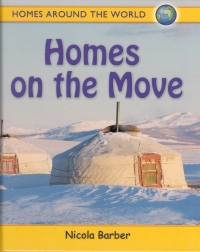 |
Homes on the Move. (Homes Around the World).
Nicola Barber.
St. Catharines, ON: Crabtree, 2008.
32 pp., pbk. & hc., $10.95 (pbk.), $20.76 (rlb.).
ISBN 978-0-7787-3556-4 (pbk.), ISBN 978-0-7787-3544-1 (rlb.).
Subject Headings:
Dwellings-Juvenile literature.
Mobile homes-Juvenile literature.
Grades 1-3 / Ages 6-8.
Review by Gail Hamilton.
**½ /4
|
| |
|
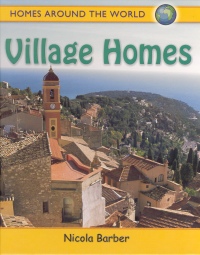 |
Village Homes. (Homes Around the World).
Nicola Barber.
St. Catharines, ON: Crabtree, 2008.
32 pp., pbk. & hc., $10.95 (pbk.), $20.76 (rlb.).
ISBN 978-0-7787-3558-8 (pbk.), ISBN 978-0-7787-3546-5 (rlb.).
Subject Headings:
Dwellings-Juvenile literature.
Housing, Rural-Juvenile literature.
Villages-Juvenile literature.
Grades 1-3 / Ages 6-8.
Review by Gail Hamilton.
**½ /4
|
| |
|
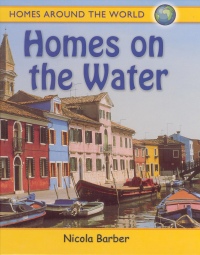 |
Homes on the Water. (Homes Around the World).
Nicola Barber.
St. Catharines, ON: Crabtree, 2008.
32 pp., pbk. & hc., $10.95 (pbk.), $20.76 (rlb.).
ISBN 978-0-7787-3559-5 (pbk.), ISBN 978-0-7787-3547-2 (rlb.).
Subject Headings:
Dwellings-Juvenile literature.
Waterfronts-Juvenile literature.
Houseboats-Juvenile literature.
Grades 1-3 / Ages 6-8.
Review by Gail Hamilton.
**½ /4
|
| |
|

excerpt:
A waterside home is a home that is located next to a river, a lake, a canal, or by the sea. Some waterside homes are built over the water, and some float on the water itself.
In some places, there are whole cities of waterside homes. The city of Venice in Italy is a waterside city. It was built on 118 small islands inside a lagoon. In Venice, people drive boats along the city's canals to get around the city. (From Homes on the Water.)
This six-volume series features the exteriors and interiors of homes from a great variety of geographic locales. The books, identical in layout, consist of 12 chapters each, a table of contents, a glossary and an index as well as a list of books and websites for further study. (Not surprisingly, each of the suggested print materials comes from another Crabtree series.) Topics include local materials from which the homes are built, environmental factors which affect the home's design, and the different lifestyles of the people living in these houses with regard to jobs, transportation, schools and activities. Also provided is a related activity for children to try and a world map showing all of the places pictured in the book. The text is very straightforward and easy for readers to comprehend. Printed in a large, simple font, the text has plenty of white space around it to help young readers follow the words. Though the information is interesting, it could have been distilled into one book. The main strength of this series is the fantastic colour photographs of unique homes around the world.
City Homes lists examples of different kinds of urban homes- apartments, townhouses, shelters and single detached homes. Problems with heating and cooling the homes (depending on where the homes are), and the effects of earthquakes, hurricanes and pollution are featured along with the many amenities, such as zoos, parks, larger schools and department stores, that a city has to offer its residents. Readers are given instructions for making a mobile of a cityscape.
Island Homes begins with the definition of an island, followed by examples of various types of homes and their materials: stone walls to keep the wind and rain out, stilts for cooling, bamboo, leaves, thatch and rice paper. Environmental concerns are mainly volcanoes and changes in sea level. The author describes island life and tropical islanders' dependence on fishing and tourism. Children can make a travel brochure to advertise their island home.
Mountain Homes provides readers with information about the uniqueness of the problems associated with living on a mountain. Some examples are landslides and avalanches, quick snow melt, and adapting the land for farming through the use of terraces cut into the mountain. Ski resorts, mountain grazers (yaks and goats) as well as pack animals (llamas) are mentioned. The activity is a mountain board game whose questions can be answered by reading the book.
Homes on the Move describes the nomadic lifestyles of people who use tents, houseboats, trailers, yurts and igloos. Readers will be able to see what the interior of a yurt looks like. Attention is drawn to refugees who have lost their homes due to wars and natural disasters and so must live in moveable shelters. There is also mention of occupations, such as traveling circus employees, which require workers to live in moveable housing. This book has particularly interesting photos of places around the world. The art project is the construction of a clay igloo.
Village Homes compares village life to big city life. Housing materials include wood, stone, mud, animal skins, palm leaves and even cow dung which, when dried, keeps insect pests away. Homes range from the very simply adorned (like the white houses in Greece) to the very colourful and ornate (indigo dyed walls in India and flower patterned walls in Poland). Unusual modes of transportation and the importance of clean water in a village are also discussed. The activity is a village home memory game, requiring only paper, pencil and scissors.
Homes on Water can be houseboats, floating islands made of reeds, or shanty towns. One interesting photograph shows a Vietnamese family whose living room floor has a large trap door in it so the family can feed and catch fish. With a floating home, there is more dependence on the water for navigation, drinking, washing, recreation and transporting goods. There are also floating markets and schools. Problems particular to homes on water include floods and erosion. An experiment at the back of the book is designed to show which of several materials floats best.
Recommended with reservations.
Gail Hamilton is a teacher-librarian in Winnipeg, MB.

To comment
on this title or this review, send mail to cm@umanitoba.ca.
Copyright © the Manitoba Library Association. Reproduction for personal
use is permitted only if this copyright notice is maintained. Any
other reproduction is prohibited without permission.
NEXT REVIEW |
TABLE OF CONTENTS FOR THIS ISSUE
- February 8, 2008.
AUTHORS |
TITLES |
MEDIA REVIEWS |
PROFILES |
BACK ISSUES |
SEARCH |
CMARCHIVE |
HOME |





